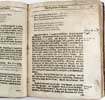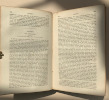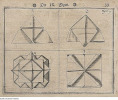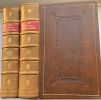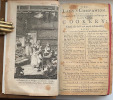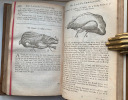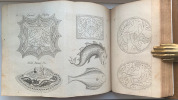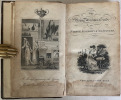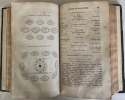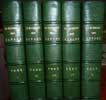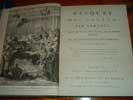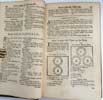Adam's Luxury and Eve's Cookery
OR,THE Kitchen-Garden display’d. In Two Parts. 1. Shewing the best and most approved Methods of raising and bringing to the greatest Perfection, all the Products of the Kitchen-Garden; with a Kalendar shewing the different Products of each Month, and the Business proper to be done in it. 11. Containing a large Collections of Receipts for dressing all Sorts of Kitchen Stuff, so as to afford a great Variety of cheap, healthful, and palata-ble Dishes. To which is Added, The Physical Virtues of every Herb and Root. (a line) Designed for the Use of all who would live Cheap, and pre-serve their Health to old Age ; particularly for Farmers and Tradesmen in the Country, who have but small Pieces of Garden Ground, and are willing to make the most of it. (a line) LONDON: Printedc for R. Dobsley, in Pall-Mall ; and Sold by M. Cooper, at the Globe in Pater-noster Row. (a line) MDCCXLIV.
FIRST AND SOLE EDITION. 1744. 12mo. Inside-cover with the bookplate of Mary Chadsey. 1fep. Half Title with small thin 1” piece torn from outer edge without loss, also with ownership inscription “Elizabeth Wynn 1761”. [1]. Title page. [1]. The Introduction - (1) with woodcut headpiece, vi – xii, with woodcut tailpiece. (1) Top woodcut border and decorated initial letters, 2-211. The garden Kalendar starts on p 81. The second part starts on p 101. (1)213-216. 2feps with ownership inscription “Gwen Thomas her book – 1774. Bound in modern full brown calf with two-tone panels on boards. Spine with raised bands and red label with gilt lettering and lines. Bottom compartment with gilt date – 1744. The first few leaves slightly browned but overall in very good condition.
- An unusual old cookery book. It has interesting information and very good advice on the first 80 pages on growing all items in the Kitchen garden. Then 20 pages of very precise Kalendar [sic] information. The second section of 110 pages has unusually for the time, good and detailed recipes. Not all recipes are purely vegetarian as some require meat stocks. This is an important item of any collection of early English cookery books. It helps explain why COPAC lists no less than nineteen British libraries holding a copy. Only 3 copies in auction in 30 years. One of which came up twice. Bitting p 514; Cagle p 541; MacLean p 3; Oxford p 74.





click on image to enlarge

Antiquarian category
ref number:
11201 

